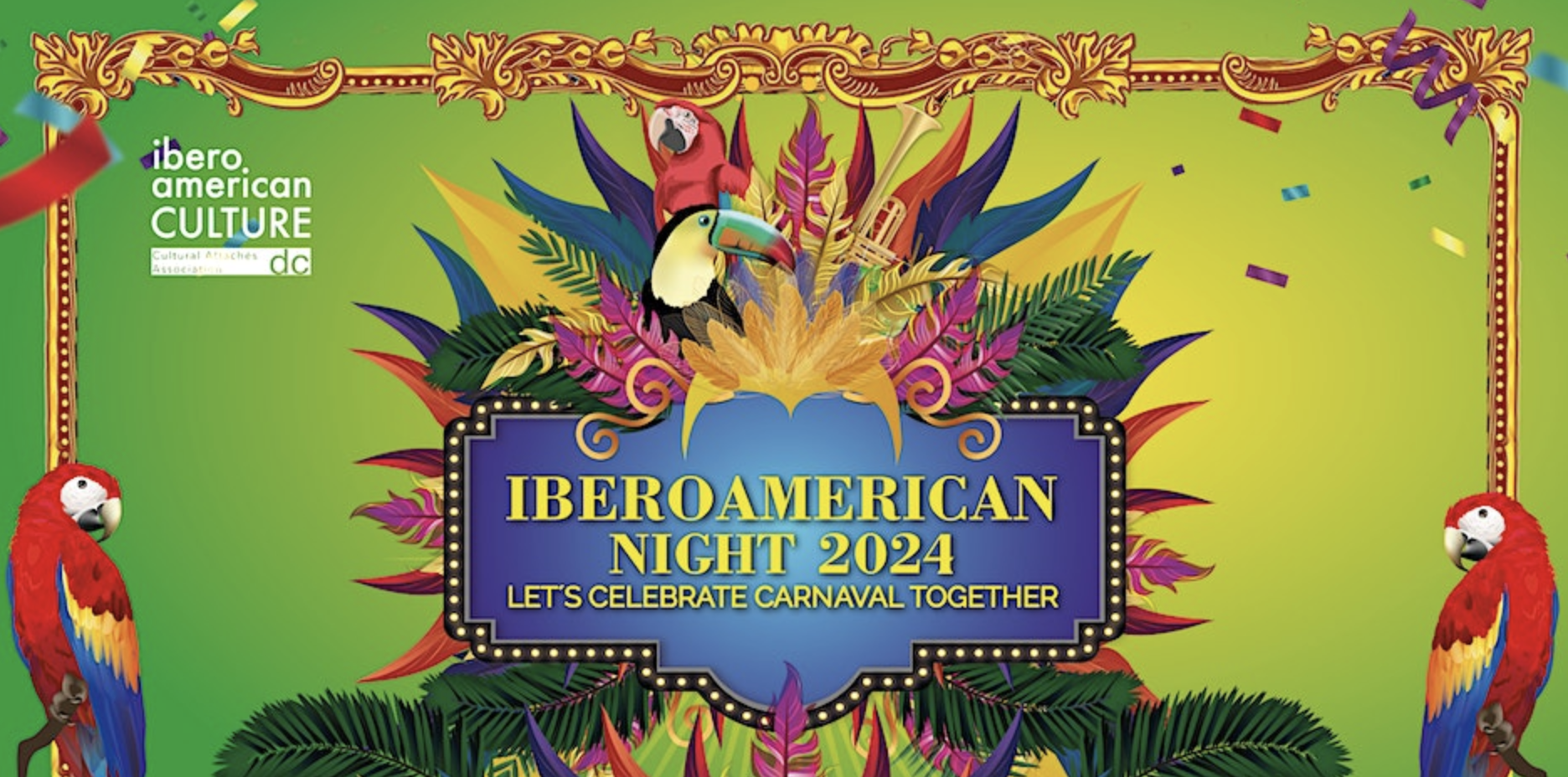
On Friday, March 1, the Ibero-American Cultural Attachés Association hosted their annual Carnaval fête, with the 19 Latin American Embassies, including Spain and Portugal, presenting a wide array of food, drinks, dancing, and more. Dancers from the Dominican Republic, Panama, Ecuador, and Cuba offered dazzling exhibitions, and member nations offered ceviche, empanadas, pupusas, pão de queijo, and arroz moro con yuca, along with mezcal, pisco sour, Spanish beer, and a curated wine selection from Argentina, Bolivia, Uruguay, and Chile.
“Ibero American Night 2024, in tandem with educating and engaging the D.C. public about our cultures, aims to demonstrate solidarity and mutual appreciation among our member nations, emphasizing how our diplomatic missions are collectively uplifted when we work together,” AACIA President, Enrique Quiroz, said.
In honor of the annual event, here are some of the Ibero-American embassies and residences Diplomatica has profiled, including the venue of the gala, the residence of the Colombian Ambassador.
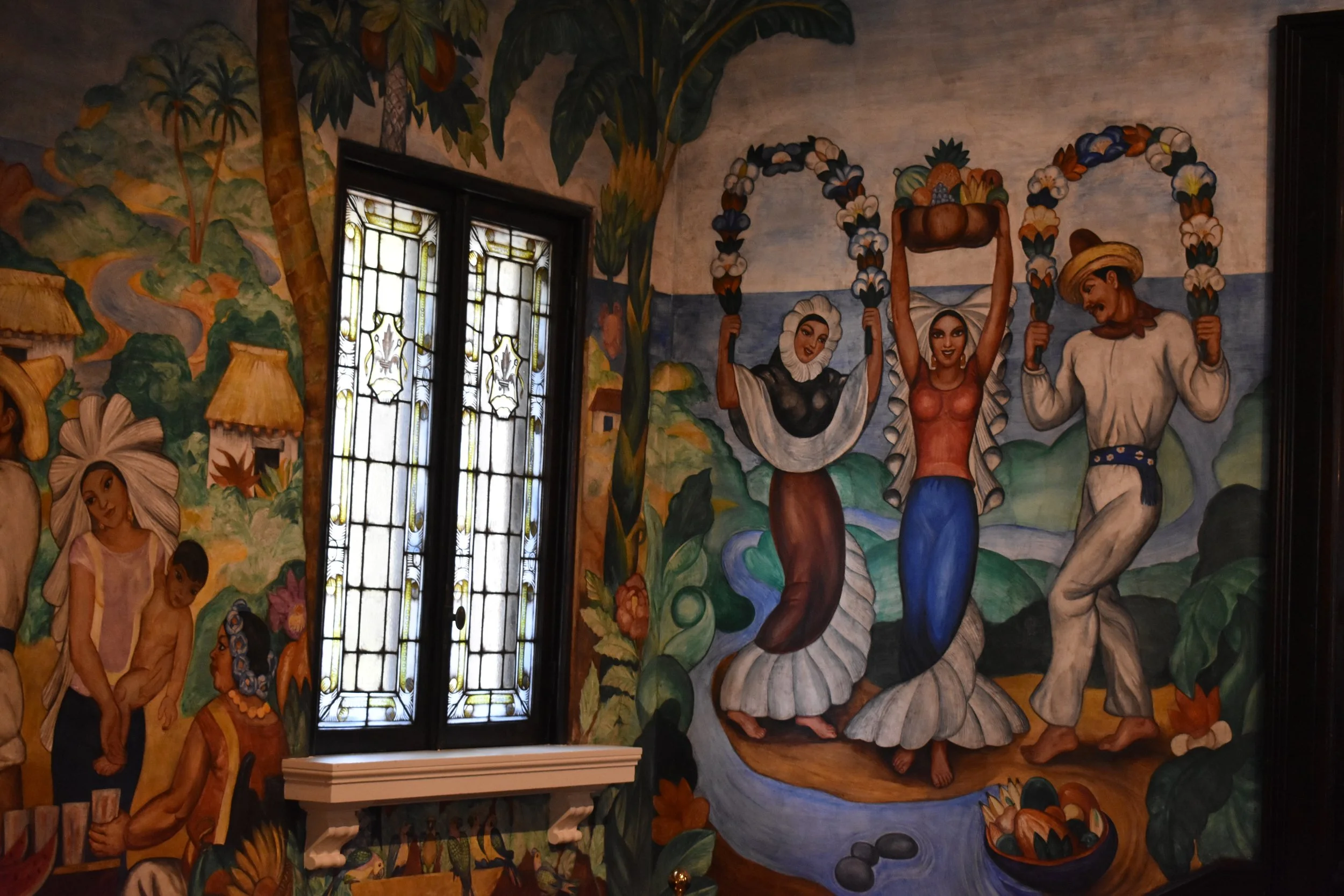
Mexican Cultural Institute
The history of Mexico winds along the walls of the main staircase of 2829 16th Street, part of Mary Foote Henderson’s diplomatic enclave and once the country’s embassy.
Painted by the artist Roberto Cueva del Río, who began work on the mural in 1931, the sweeping series depicts various scenes floor-to-ceiling scenes – the Tehuantepec Festival of the Flowers; a rural scene from Ixtaccihuatl and Popocatepetl, scenes of industrial Mexico, the landing of Columbus and pre-Columbian Mexico and others.
The dramatic images grace three floors’ worth of walls and their landings, adding vivid color and life to the interior of the Beaux Arts mansion on 16th Street that is virtually undetectable from its stately, austere, exterior.
It’s a stunning display now publicly accessible in a building once shrouded in secrecy.
Read The Mysterious Mansion with History Written on Its Walls on Diplomatica.
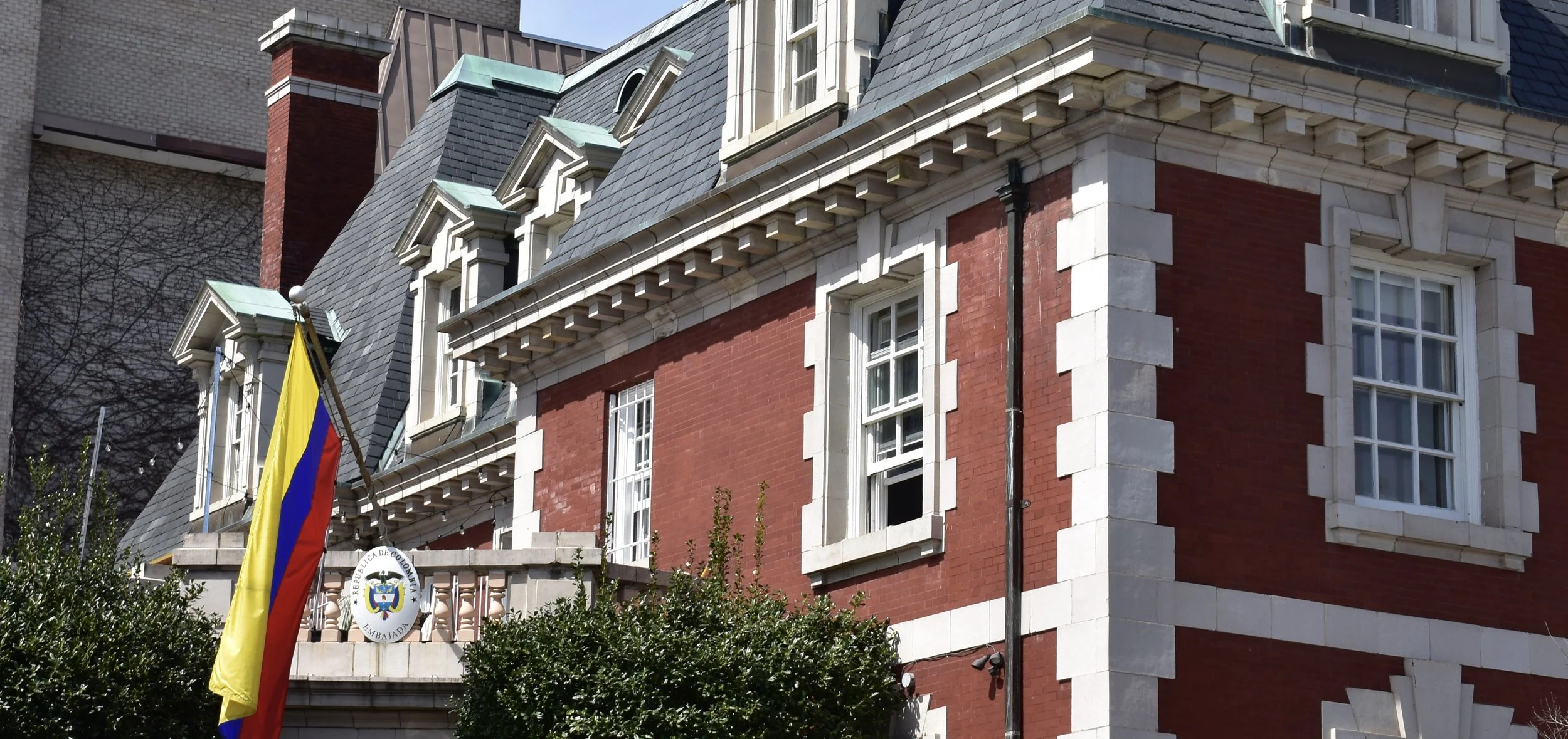
Residence of the Ambassador of Colombia
Built in 1906 to resemble the Château de Balleroy in Normandy from the outside, the residence of the Colombian ambassador blends a hodgepodge of styles to create a building that was whimsically described as “varied” in its inclusion in the roster for the Dupont Circle National Historic District. The residence replaced three other family homes that had previously sat on the lot. Built in 1906 to resemble the Château de Balleroy in Normandy from the outside, de Sibour blended a hodgepodge of styles to create a building that was whimsically described as “varied” in its inclusion in the roster for the Dupont Circle National Historic District. The residence replaced three other family homes that had previously sat on the lot.
And, despite the home having no rooftop patio or balcony, on a crisp, clear autumn night, I found myself standing on its roof, overlooking Dupont Circle.
Read The Invisible Dance on Diplomatica.
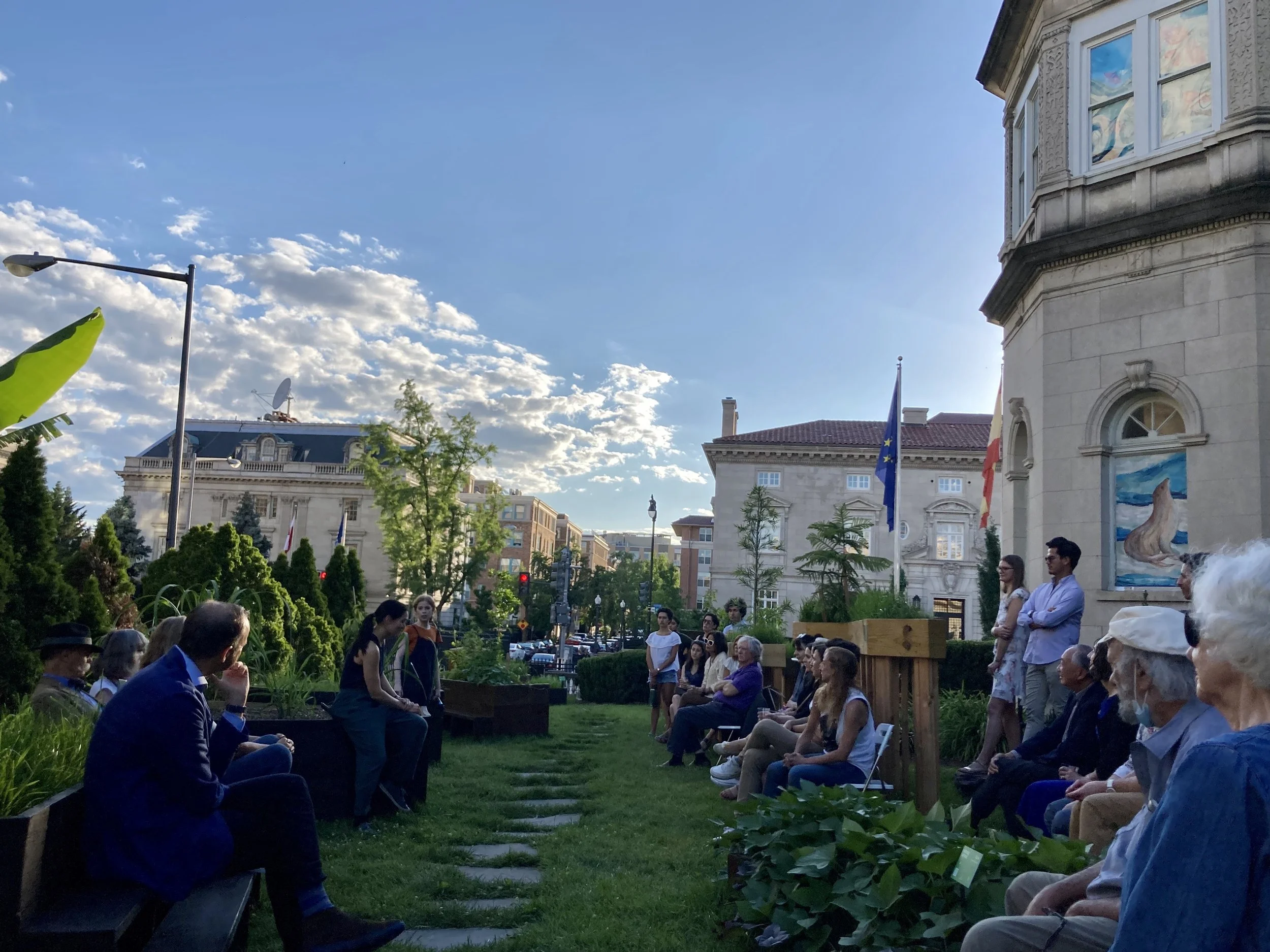
Former Residence of the Ambassadors of Spain
The building that serves as the home of the Spanish embassy’s cultural office is one of many current and former embassies along 16th Street, willed into being by Mary Henderson in the Gilded Age who envisioned creating a diplomatic enclave in Washington on the hill. Within a short walking distance are also the former Italian embassy (now apartments), the Cuban Embassy, the former French embassy (now the Council for Professional Recognition), the Polish Embassy, the Ecuadorean Embassy, Meridian International Center, and of course, Spain’s immediate neighbor, the Mexican Cultural Institute, which has a nearly identical history of being an embassy and residence, and now a cultural center.
Designed by George Oakley Totten Jr., Ms. Henderson’s preferred architect for her grand vision, the building that is now the Former Residence of the Ambassadors of Spain was meant to be the home of the American Vice President. She offered it as a gift, but Congress declined, saying the upkeep was too extravagant for a Vice President’s salary. When Spain purchased the building in 1926, they were already using another Henderson building nearby as their embassy. (That building, 2620, now is also an apartment complex.) After purchasing the building, the Spanish government built a chancery, for which they hired Jules Henri de Sibour, who had designed the Colombian Ambassador’s residence and the former Canadian, now Uzbek, embassy.
Read The Inside-Out Residence on Diplomatica.
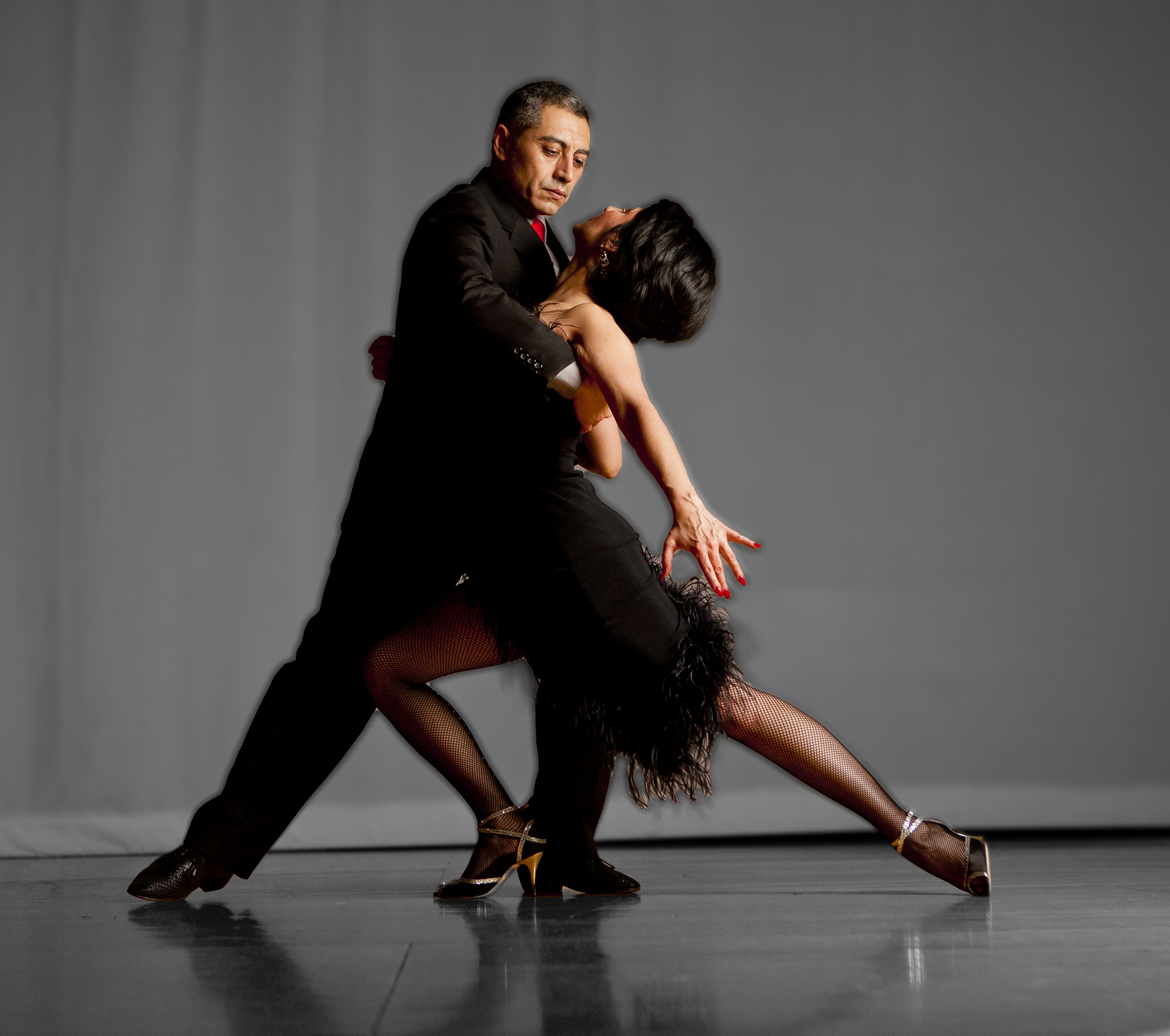
Embassy of Uruguay
There are few tools of cultural diplomacy quite like tango. Originating in the poorer districts of Buenos Aires and Montevideo along the Río de la Plata basin, the music, dance, and poetry of tango are now listed on the UNESCO’s Representative List of the Intangible Cultural Heritage of Humanity, a nomination put forth by both Argentina and Uruguay. The origins of tango were heavily influenced by Candombe, another honoree on the UNESCO list, which originated in Uruguay by the descendants of enslaved Africans, more than 200,000 of whom arrived in the twin ports of Buenos Aires and Montevideo between the 16th and 19th centuries. Meetings of the community were known as “tangos.” Along with local Indigenous influences, as well as later contributions by immigrants from Europe, these cultures merged to create a distinctive, new, cultural identity.
“Tango can be debated, and we have debates over it, but it still encloses, as does all that which is truthful, a secret,” wrote Argentine writer and poet Jorge Luis Borges.
Read Born in a River on Diplomatica.